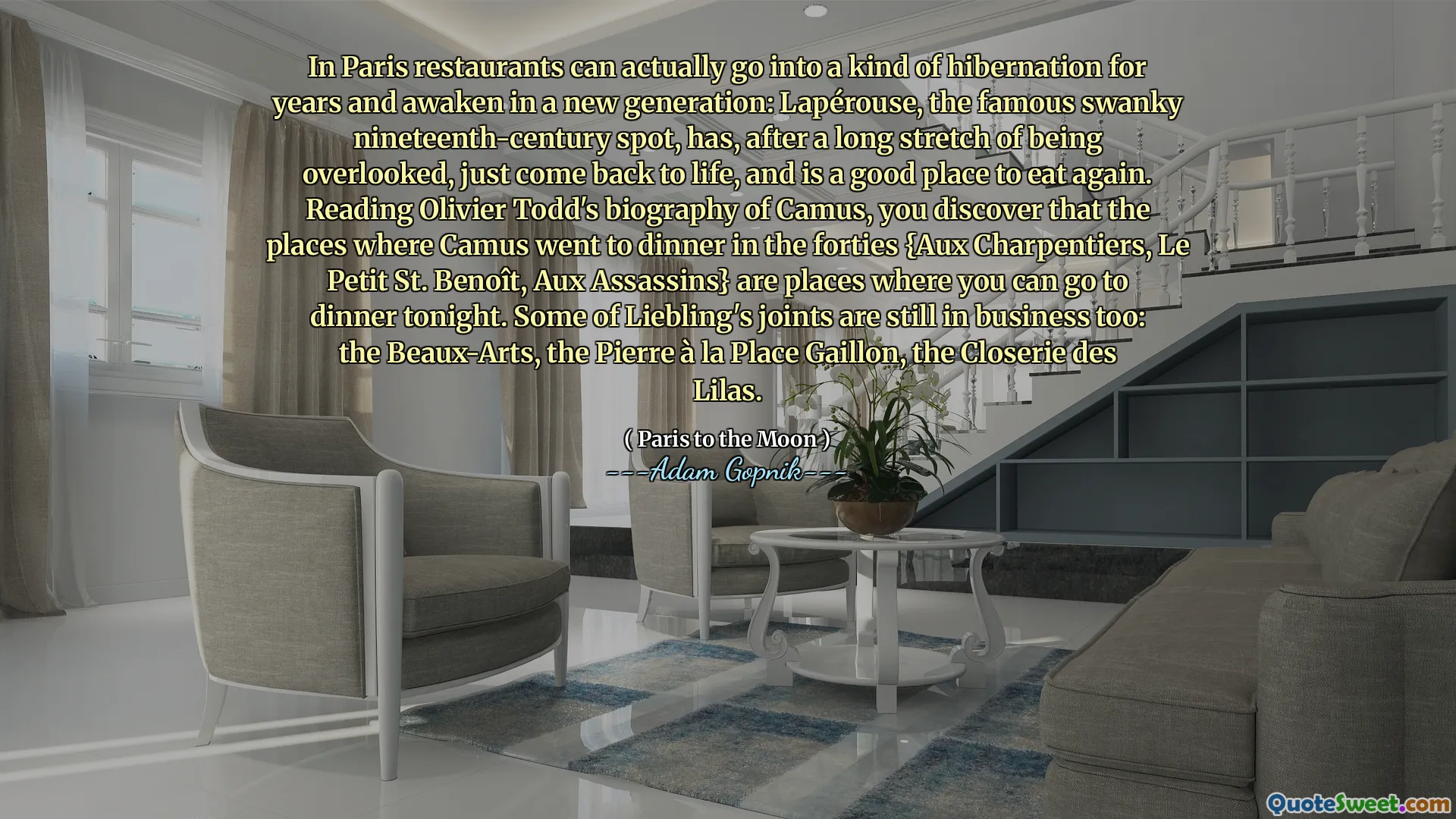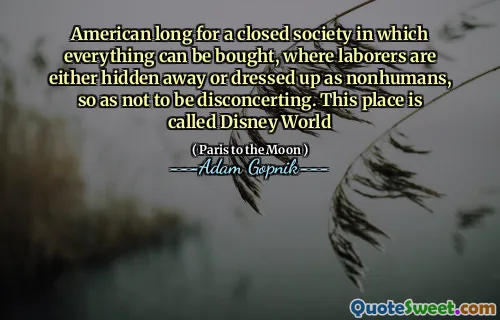
在巴黎,餐厅实际上可以陷入困境多年,并在新一代中醒来:著名时髦的19世纪景点Lapérouse在长期被忽视之后,又回到了生活之后,是一个很好的生活,是一个很好的生活再次吃饭的地方。阅读奥利维尔·托德(Olivier Todd)的《加缪》(Camus)的传记时,您会发现,卡姆斯(Camus)四十年代(Aux Charpentiers,le Petit St.Benoît,aux Assassins}的晚餐的地方是您今晚可以去晚餐的地方。 Liebling的某些关节也在开展业务:Beaux-Arts,PierreàlaPlace Gaillon,Closie des Lilas。
(In Paris restaurants can actually go into a kind of hibernation for years and awaken in a new generation: Lapérouse, the famous swanky nineteenth-century spot, has, after a long stretch of being overlooked, just come back to life, and is a good place to eat again. Reading Olivier Todd's biography of Camus, you discover that the places where Camus went to dinner in the forties {Aux Charpentiers, Le Petit St. Benoît, Aux Assassins} are places where you can go to dinner tonight. Some of Liebling's joints are still in business too: the Beaux-Arts, the Pierre à la Place Gaillon, the Closerie des Lilas.)
在巴黎,某些餐馆可以长时间关闭,但后来才重新开放,恢复了新一代的食客。一个例子是Lapérouse,这是19世纪曾经受欢迎的机构,在某种程度上被忽视后,它重新获得了理想的就餐目的地的地位。复兴的周期突出了该市独特的烹饪景观,历史和现代性相交。
也可以通过诸如阿尔伯特·卡姆斯(Albert Camus)等文学人物的角度来看待巴黎餐饮的持久遗产。在奥利维尔·托德(Olivier Todd)的《加缪传记》中,读者发现,他在1940年代经常光顾的各种餐馆,包括Aux Charpentiers和Le Petit St.Benoît,今天仍然为顾客服务。同样,作家A.J.提到的几个机构像Closerie des Lilas一样,Liebling继续蓬勃发展,展示了巴黎餐厅的持久吸引力和文化丰富。











